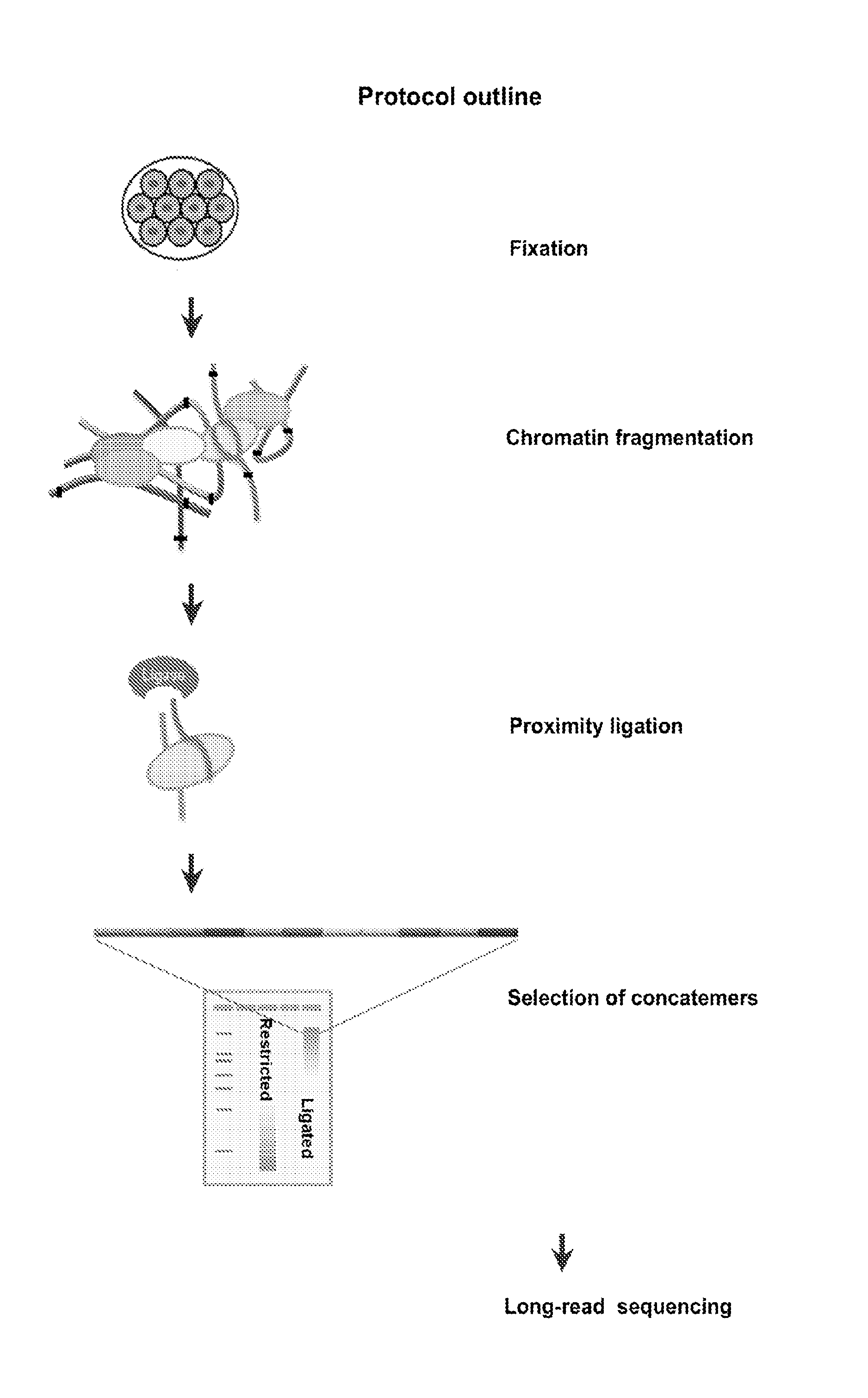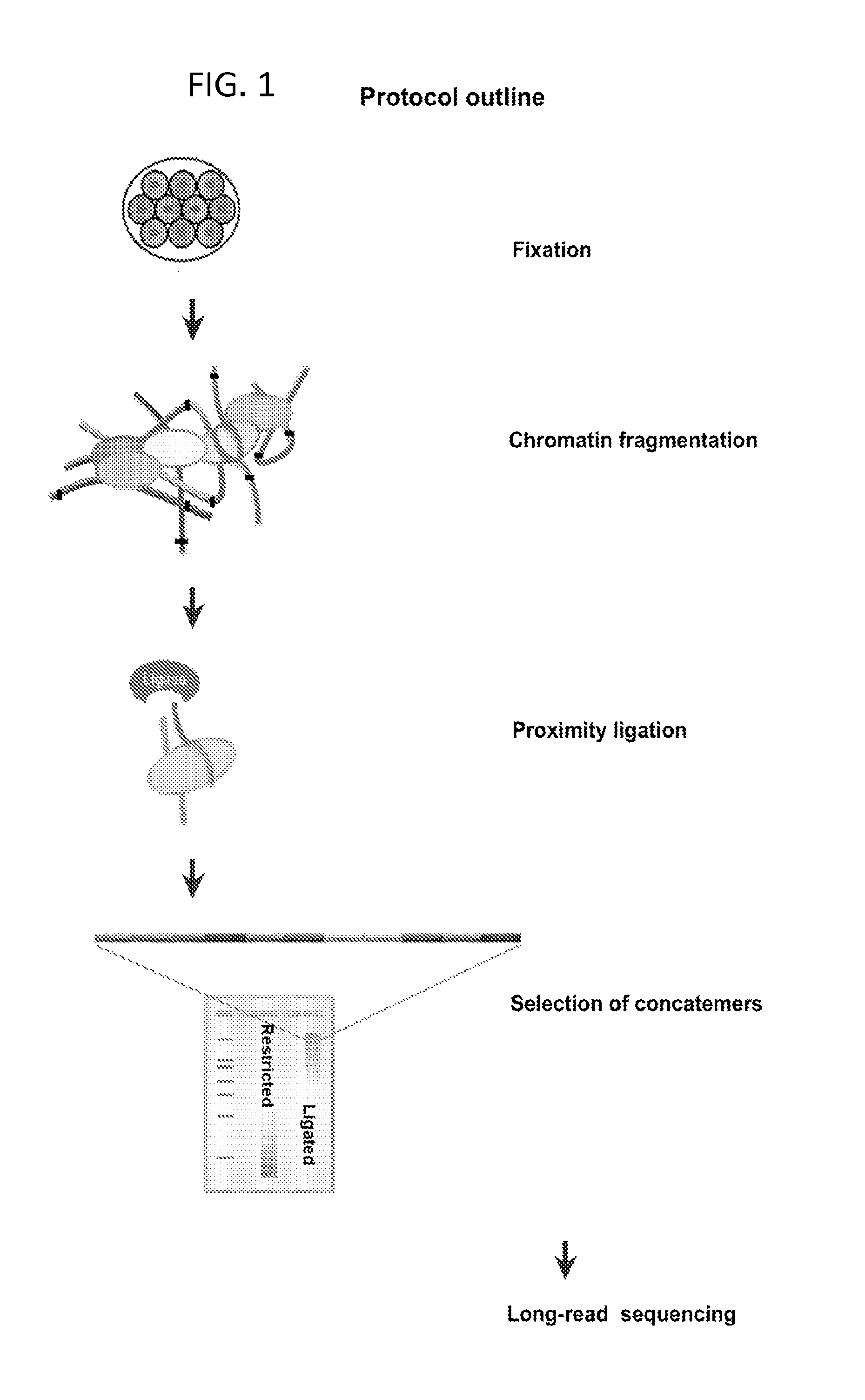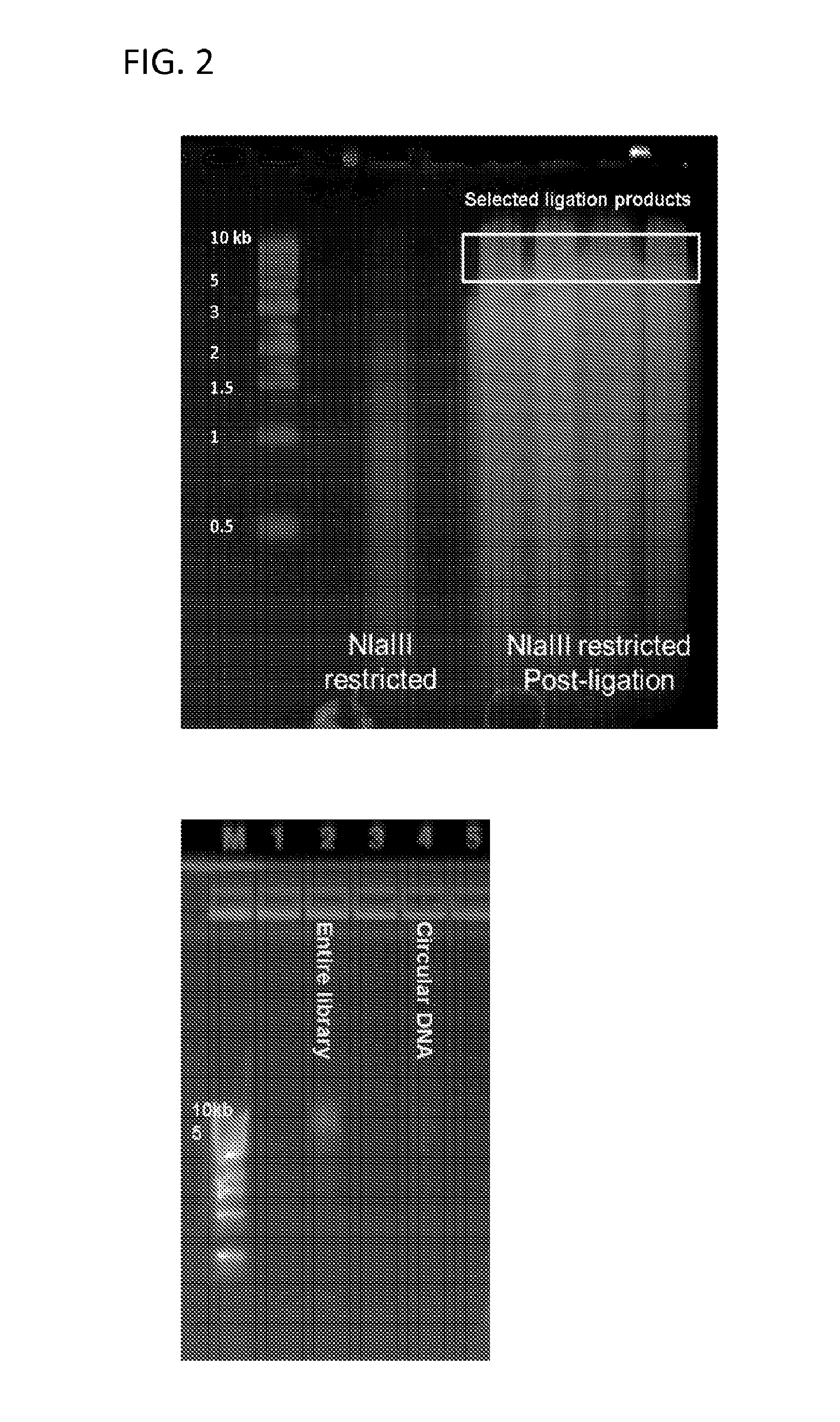Methods of Determining Multiple Interactions Between Nucleic Acids in a Cell
a technology of nucleic acid and interaction, applied in the field of determining multiple interactions between nucleic acids in a cell, can solve the problems of difficult to determine the interactions in a cell in part, and complicate the study of genome dynamics
- Summary
- Abstract
- Description
- Claims
- Application Information
AI Technical Summary
Benefits of technology
Problems solved by technology
Method used
Image
Examples
example 1
Protocol for preparation of concatemer library for long-read sequencing
[0102]Lysis and Restriction Digest[0103]1) To lyse the cells, lysis buffer (500 μl 10 mM Tris-HCl pH8.0, 10 mM NaCl, 0.2% Igepal CA630) is mixed with 100 μl protease inhibitors and added to one formaldehyde-crosslinked pellet (5-20 million cells).[0104]2) Incubate cell suspension on ice for >15 minutes.[0105]3) Centrifuge for 5 minutes at 2500×G at RT, discard the supernatant. Next steps are based on 5 million cells per tube.[0106]4) Wash nuclear pellet in 1× restriction buffer by spinning at 2500×G at RT[0107]5) To facilitate complete cell lysis and solubilization of proteins, resuspend pellet is 50 ul of 0.5% SDS, add and heat at 62 C for 10 min. After heating is over, add 150 ul water and 25 ul 10% TritonX-100 to quench SDS and mix well avoiding excessive foaming. Incubate at 37 C for 15 min.[0108]6) Add 25 ul 10× restriction buffer.[0109]7) Chromatin is subsequently digested overnight at 37° C. by adding 400 ...
PUM
| Property | Measurement | Unit |
|---|---|---|
| Length | aaaaa | aaaaa |
| Interaction | aaaaa | aaaaa |
| Proximity effect | aaaaa | aaaaa |
Abstract
Description
Claims
Application Information
 Login to View More
Login to View More - R&D
- Intellectual Property
- Life Sciences
- Materials
- Tech Scout
- Unparalleled Data Quality
- Higher Quality Content
- 60% Fewer Hallucinations
Browse by: Latest US Patents, China's latest patents, Technical Efficacy Thesaurus, Application Domain, Technology Topic, Popular Technical Reports.
© 2025 PatSnap. All rights reserved.Legal|Privacy policy|Modern Slavery Act Transparency Statement|Sitemap|About US| Contact US: help@patsnap.com



